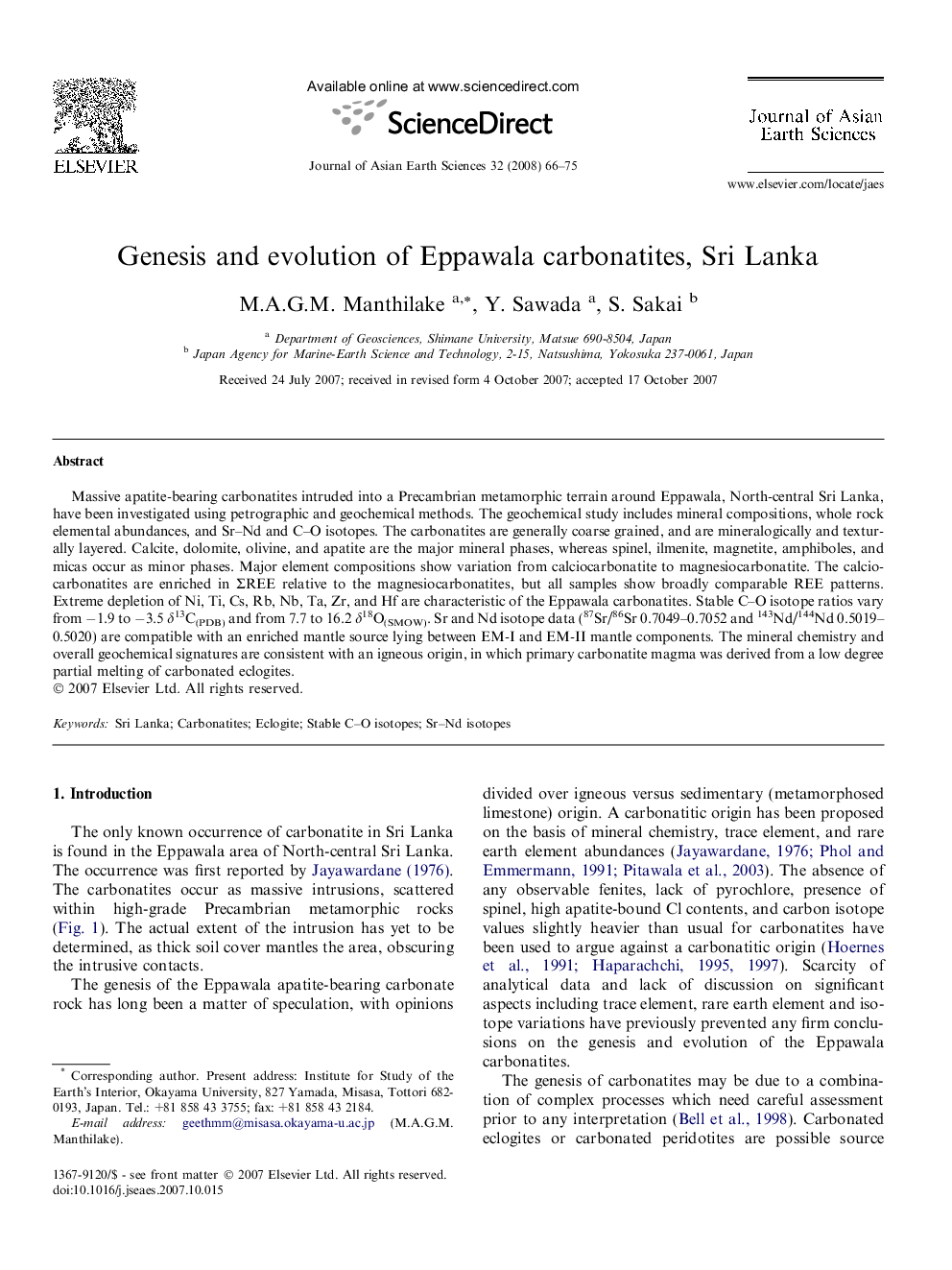| Article ID | Journal | Published Year | Pages | File Type |
|---|---|---|---|---|
| 4732420 | Journal of Asian Earth Sciences | 2008 | 10 Pages |
Massive apatite-bearing carbonatites intruded into a Precambrian metamorphic terrain around Eppawala, North-central Sri Lanka, have been investigated using petrographic and geochemical methods. The geochemical study includes mineral compositions, whole rock elemental abundances, and Sr–Nd and C–O isotopes. The carbonatites are generally coarse grained, and are mineralogically and texturally layered. Calcite, dolomite, olivine, and apatite are the major mineral phases, whereas spinel, ilmenite, magnetite, amphiboles, and micas occur as minor phases. Major element compositions show variation from calciocarbonatite to magnesiocarbonatite. The calciocarbonatites are enriched in ΣREE relative to the magnesiocarbonatites, but all samples show broadly comparable REE patterns. Extreme depletion of Ni, Ti, Cs, Rb, Nb, Ta, Zr, and Hf are characteristic of the Eppawala carbonatites. Stable C–O isotope ratios vary from −1.9 to −3.5 δ13C(PDB) and from 7.7 to 16.2 δ18O(SMOW). Sr and Nd isotope data (87Sr/86Sr 0.7049–0.7052 and 143Nd/144Nd 0.5019–0.5020) are compatible with an enriched mantle source lying between EM-I and EM-II mantle components. The mineral chemistry and overall geochemical signatures are consistent with an igneous origin, in which primary carbonatite magma was derived from a low degree partial melting of carbonated eclogites.
